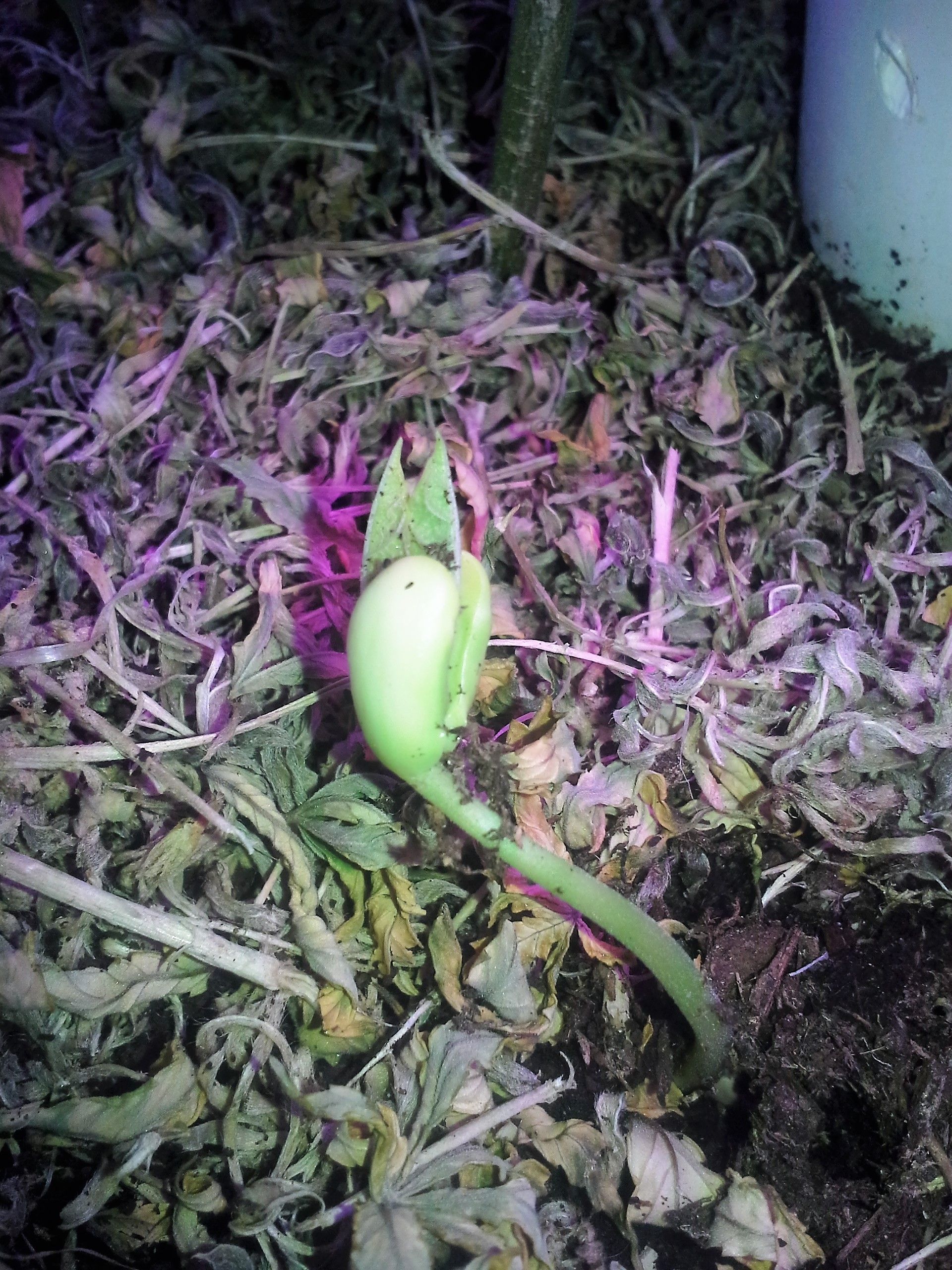
(Image is my own)
CORVALLIS, Ore. – Fertilizers provide one or more of the chemical elements necessary for plant growth and development.
Organic fertilizers such as manures, compost or bone meal are derived directly from plant or animal sources. Inorganic fertilizers such as ammonium sulfate or ammonium phosphate are often called commercial or synthetic fertilizers, because they go through some manufacturing process, although many of them come from naturally occurring mineral deposits.
Neither type is better in every situation, because there are advantages and disadvantages to using either one, according to Ross Penhallegon, horticulturist with the Oregon State University Extension Service.
Inorganic fertilizers usually contain only a few nutrients – generally nitrogen, phosphorus, potassium and some sulfur, either singly or in combination, explained Penhallegon. These nutrients are in a concentrated form readily available to plants. However, since they are lost from the soil quickly, you may have to apply it several times during the growing season unless you use a specially formulated, slow-release type.
Some nutrients, such as nitrate, are quickly available for uptake by plant roots. If you need only a certain element such as nitrogen and want it to be quickly available to your plants, an inorganic fertilizer such as ammonium nitrate might be in order.
Organic fertilizers usually contain many plant nutrients in low concentrations. Many of these nutrients have to be converted into inorganic forms by soil bacteria and fungi before plants can use them, so they typically are more slowly released, over time.
Since bacteria and fungi have to decompose organic fertilizer before they can be taken up by plants, nutrients are released more slowly, especially during cold weather when soil microbes are not as active. But organic fertilizers have many advantages. With organic fertilizers soil crusting is reduced. Organics may improve water movement into the soil and, in time, add structure to the soil. Organics feed beneficial microbes, thereby making the soil easier to work. Organic fertilizers may cost more than chemical, or inorganic fertilizers, because they are less concentrated, supplying fewer nutrients pound for pound.
Since many chemical/inorganic fertilizers are concentrated and very soluble, it is easier to apply too much and damage your plants. If you apply too much fresh, non-composted manure, you can damage your plants as well, because some manures contain harmful amounts of salts in addition to plant nutrients. Non-composted manures can also be a source of weed seeds.
Penhallegon has collected information about the nitrogen (N), phosphorus (P) and potassium (K) content of many of the organic substances commonly used as fertilizer in Oregon, including green manure crops such as crimson clover and alfalfa. His report, entitled, "Values of Organic Fertilizers," also contains information about how quickly an organic fertilizer releases available nutrients and a reference list on organic gardening.
"One of the most difficult things to determine for an organic gardener is how much organic fertilizer to use, say on 1,000 square feet of garden," said Penhallegon. "For a fertilizer with an N-P-K ratio of 12-11-2, this means 12 percent is nitrogen, 11 percent is phosphorus and 2 percent is potassium. In simple terms, this means each 100-pound bag of the fertilizer would contain 12 pounds of nitrogen, 11 pounds phosphorus and two pounds nitrogen.
"For example, using 12-11-2 fertilizer, if we knew we wanted to apply one pound of nitrogen, we would use 1/12th of 100 pounds," continued Penhallegon. "This equals about 8 pounds of this fertilizer applied to get one pound of nitrogen out there in the soil."
Cover crops generally release their nutrients slowly, over a period of two to six months, said Penhallegon. Nutrient values for cover crops include: alfalfa (2.5 -0.5 - 2), crimson clover (2-0.2-2), Australian winter peas (3-0-1), annual rye (1-0-1).
Blood meal (12.5-1.5-0.6), bat guano (8-5-1.5) and many of the manures (variable nutrient contents) release their nutrients over a period of two to six weeks.
Burned eggshells (0-.5-.3), fish emulsion (5-1-1) and urea (urine) (46-0-0) are the fastest-acting organic fertilizers, lasting only a couple of weeks.
To boost the nitrogen content of your soils, apply nitrogen rich urea (42-46 percent N), feathers (15 percent N), blood meal (12.5 percent N), bat guano (12.3 percent N) or dried blood (12 percent N). Manures are usually less expensive than other animal by-products.
Organic amendments highest in phosphorus include rock phosphate (20-33 percent P), bone meal (15-27 percent P) and colloidal phosphate (17-25 percent P). High in potassium are kelp (4-13 percent K), wood ash (3-7 percent K), granite meal (3-6 percent K) and greensand (5 percent K).
To make soil less acidic, gardeners want materials rich in calcium, including clamshells, ground shell marl, oyster shells, wood ashes, dolomite and gypsum (all are at least 30 percent calcium carbonate or straight calcium).
To obtain a copy of Penhallegon's "Values of Organic Fertilizers," send a request and include a self-addressed, stamped, legal-sized (#10) envelope with one 39-cent stamp to: Lane County Office, OSU Extension Service, 950 West 13th Ave., Eugene, OR 97402.
(Source: http://extension.oregonstate.edu/gardening/node/955)
=== Copyright/Copyleft ===
Notwithstanding the provisions of sections 106 and 106A, the fair use of a copyrighted work for purposes such as criticism, comment, review and news reporting is not an infringement of copyright. We are making such material available for the purposes of criticism, comment, review and news reporting which constitute the 'fair use' of any such copyrighted material as provided for in section 107 of the US Copyright Law. ALL footage/images used is either done under the express permission of the original owner, or is public domain and falls under rules of Fair Use. (This is a fair use disclaimer that you can use too.)
Hi! I am a robot. I just upvoted you! I found similar content that readers might be interested in:
http://extension.oregonstate.edu/gardening/node/955
Downvoting a post can decrease pending rewards and make it less visible. Common reasons:
Submit